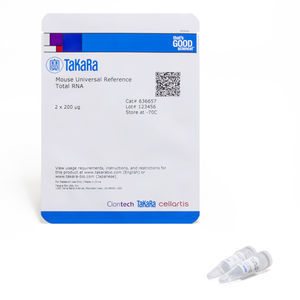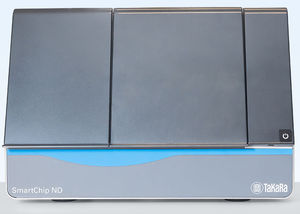
Solution reagent kit 63 seriesfor nucleic acidsfor real-time PCRphosphate
Add to favorites
Compare this product
Characteristics
- Type
- solution
- Applications
- for nucleic acids, for real-time PCR
- Tested parameter
- phosphate, genomic DNA
- Storage temperature
-20 °C
(-4 °F)
Description
Measurements of mRNA expression levels—whether by Northern analysis, ribonuclease protection, or real-time quantitative PCR—are usually standardized by comparing the data to that obtained for an internal or endogenous reference gene. Housekeeping genes such as beta-actin and glyceraldehyde-3-phosphate dehydrogenase (GAPDH) are most often used because their expression levels are expected to remain constant under different treatment conditions. Unfortunately, this assumption is not always valid, and results based on housekeeping genes alone can be biased (Suzuki, Higgins, and Crawford 2000). A better method is to normalize your data using our qPCR Human Reference cDNA, the only cDNA control derived entirely from human tissues.
qPCR Human Reference cDNA is the ideal control for comparing data from different quantitative PCR (qPCR) experiments. Because it is prepared from a total RNA pool collected from several different tissues, our qPCR Human Reference cDNA provides broad gene coverage, as shown by microarray analysis of the RNA starting material. RNA, and therefore cDNA, prepared from whole tissues provides better gene representation with less variation than RNA made from cell lines (data not shown). Moreover, PCR analysis shows that our total RNA is virtually free of genomic DNA. This allows for a more accurate measurement of transcript copy number. Both high- and low-abundance genes are well represented, allowing preparation of a wide range of serially diluted standards for each qPCR assay. Lot-to-lot variation of reference cDNA is minimal because the RNA source is prepared on an industrial scale.
Catalogs
No catalogs are available for this product.
See all of TAKARA‘s catalogsRelated Searches
- Assay kit
- Solution reagent kit
- Blood assay kit
- Molecular biology reagent kit
- Serum assay kit
- Immunoassay assay kit
- Plasma assay kit
- Research reagent kit
- Infectious disease detection kit
- Protein reagent kit
- Diagnostic reagent kit
- Laboratory reagent kit
- Enzyme reagent kit
- Molecular test kit
- Histology reagent kit
- Reagent medium reagent kit
- Immunology reagent
- Cassette assay kit
- Cytology reagent kit
- Dye reagent
*Prices are pre-tax. They exclude delivery charges and customs duties and do not include additional charges for installation or activation options. Prices are indicative only and may vary by country, with changes to the cost of raw materials and exchange rates.








